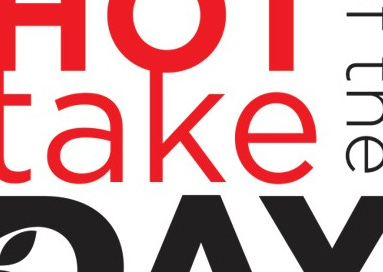Japan Is Losing Control. The U.S. Is Losing Time.
… and Trump’s call to lower rates by 300 bps is fantasy math
Inflation ticked up again this month, and the usual headlines followed: speculation on rate cuts, chatter about the Fed “waiting for more data,” and debates over whether tariffs will reignite inflation. But here’s the distinction that still gets missed: tariffs are not inflationary in the traditional sense. They are a step change—a repricing that reflects strategic shifts in global supply chains, not overheating demand.
This matters because the Federal Reserve is still behaving as if the battle is between tight labor markets and core CPI. But in reality, it’s about fiscal gravity. Until the U.S. brings spending back toward pre-COVID levels—something close to 2019 baseline—the path to sustainably lower interest rates simply doesn’t exist. And while a return to 2019 levels would nearly balance the budget at current revenue levels, the political path to get there runs straight through one obstacle: the filibuster. Without structural reform, including that, we’re left managing around symptoms.
Meanwhile, something more subtle but profound is playing out across the Pacific.
In 2008, Japan was seen as a deflationary outlier. Its central bank was passive, interest rates were stuck at the zero lower bound, and long-term yields were deeply compressed. Investors saw Japanese government bonds (JGBs) as a safe-haven asset that would quietly absorb capital without reacting. In that global moment—crisis unfolding, rates collapsing—Japan’s bond market was the anchor.
But in 2025, the roles are changing.
Yields on Japanese debt are rising—not because of growth or overheating, but because the structure of the system is starting to fail under its own weight. The 10-year JGB recently broke through 1.585%, and the 30-year climbed past 3.2%, a record high. That’s a critical signal. This is no longer about monetary policy—it’s about whether the Bank of Japan still has control.
Three forces are colliding in Japan:
A weakening yen, which imports inflation;
A high energy dependency, which makes Japan vulnerable to external shocks;
Debt levels above 260% of GDP, which limit policy flexibility.
The BOJ faces a classic trap: If it intervenes to cap yields, the yen weakens further. If it defends the yen, bond yields rise. Either path undermines confidence in one side of the market. And once market participants stop believing that the central bank can defend both sides, they stop believing the central bank can lead at all.
This is not just a Japan story—it’s a test of whether advanced economies can continue to sustain large-scale fiscal deficits without undermining their bond markets.
Which brings us back to the U.S.
So far, the Federal Reserve has held the effective federal funds rate at an effective rate 4.33%, even as inflation readings soften. This isn’t just about domestic conditions—it’s also about global positioning. Higher real rates create dollar scarcity, which supports the dollar’s role in global finance and constrains capital in competing blocs like BRICS. In other words, the Fed’s pause is also a geopolitical strategy.
But the longer Japan’s long bond yields remain elevated—offering 3.2% with less currency risk—the more pressure builds on U.S. Treasuries. The 10-year is sitting around 4.42%, and the 30-year at 4.97%, but we’re already seeing foreign demand at the long end begin to thin. The U.S. Treasury has responded by issuing more short-term debt and drawing liquidity from the reverse repo facility. These are sensible tactical moves. But they don’t address the structural imbalance. And truthfully, there is no way a market at all time highs should see a 300 bps cut BEFORE meaningful spending cuts to get the deficit to a surplus.
We are nearing a point where the market sets the terms, not the Fed. In 2008, the system unraveled from hidden fragilities. In 2025, it’s happening in plain sight:
Deficits too large to finance at 5% interest.
Debt too big to meaningfully shrink without spending cuts.
And global capital increasingly choosing where to go based on fiscal sustainability—not central bank guidance.
Japan’s bond market may be the first to reach that tipping point. But the lesson isn’t that Japan failed. The lesson is that the window to act—deliberately, incrementally, credibly—is closing for everyone.
The U.S. still has options. But those options shrink the longer we delay fiscal adjustment or pretend yield spikes are temporary anomalies. The question isn’t whether interest rates will fall. It’s whether fiscal policy will re-anchor expectations before the bond market forces the issue.
Have plans to visit Scottsdale in the future? Hit me up for a Special rate for HTOTD subscribers. Here’s the listing. Shoot me an email. dramsden99@gmail.com




Couldn't agree more. Thanks!
Tariffs are a tax on imports. They drive up the cost of product and force a market adjustment. The problem thus far has been that the market doesn't know how to adjust because they don't know what they are adjusting to. Its why you've seen the TACO nickname.
Thus far lower oil prices are offsetting higher import costs. But is that sustainable?
On fiscal policy, no one seems to be willing to bring spending down. Just the debate on Medicaid reduction has been difficult. Let alone other programs. And any cuts are being offset by higher defense and DHS spending.
And the idea that we can grow out of it seems like quite a challenge. A majority of the tax cuts were extensions of what was passed in 2018. If you haven't invested based upon it by now, I doubt the extension of those cuts is going to make a difference.
Factor in the labor disruptions due to our immigration policy I'm not sure how we avoid a recession. And when that happens then I expect we will see lower interest rates.